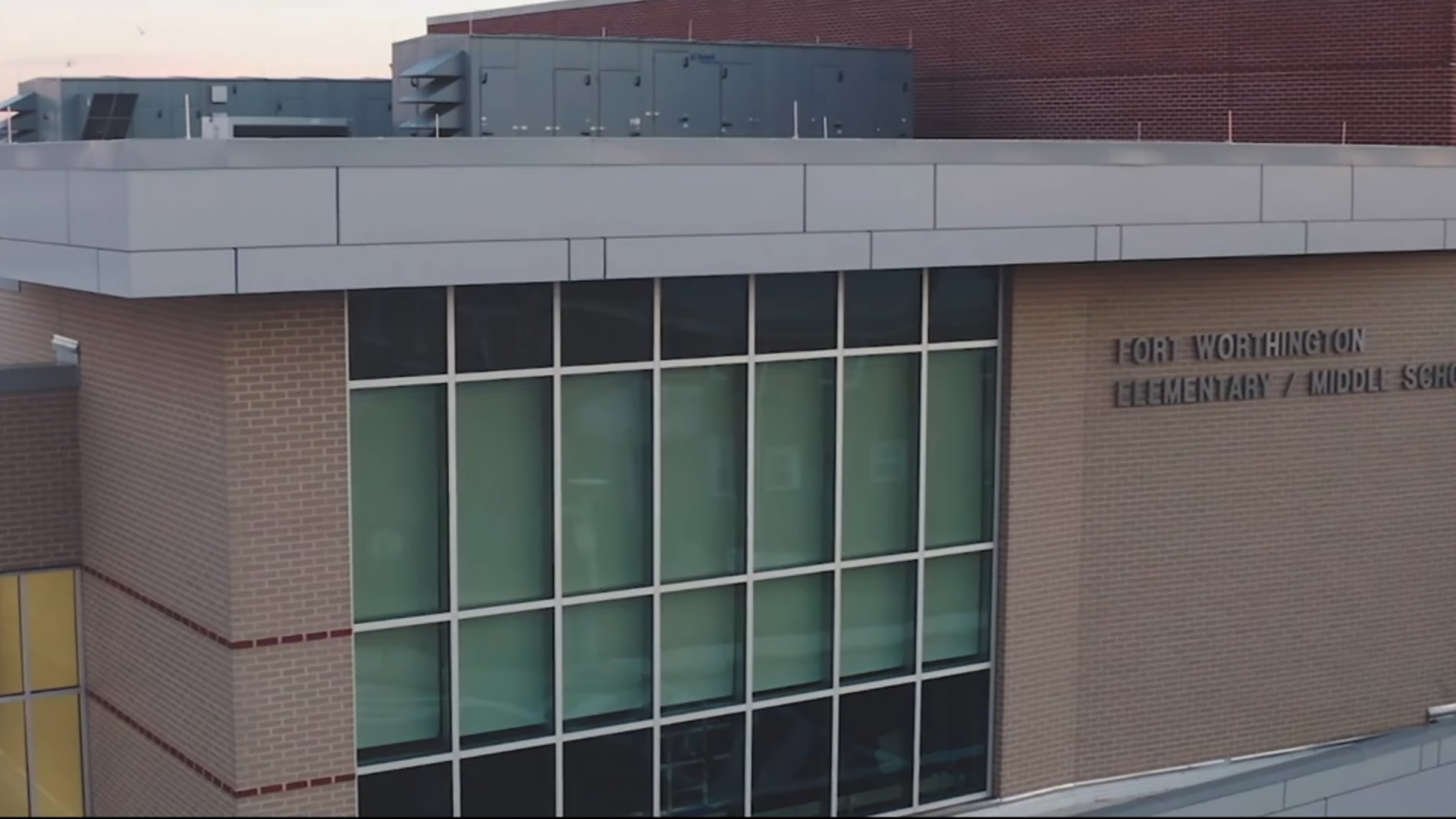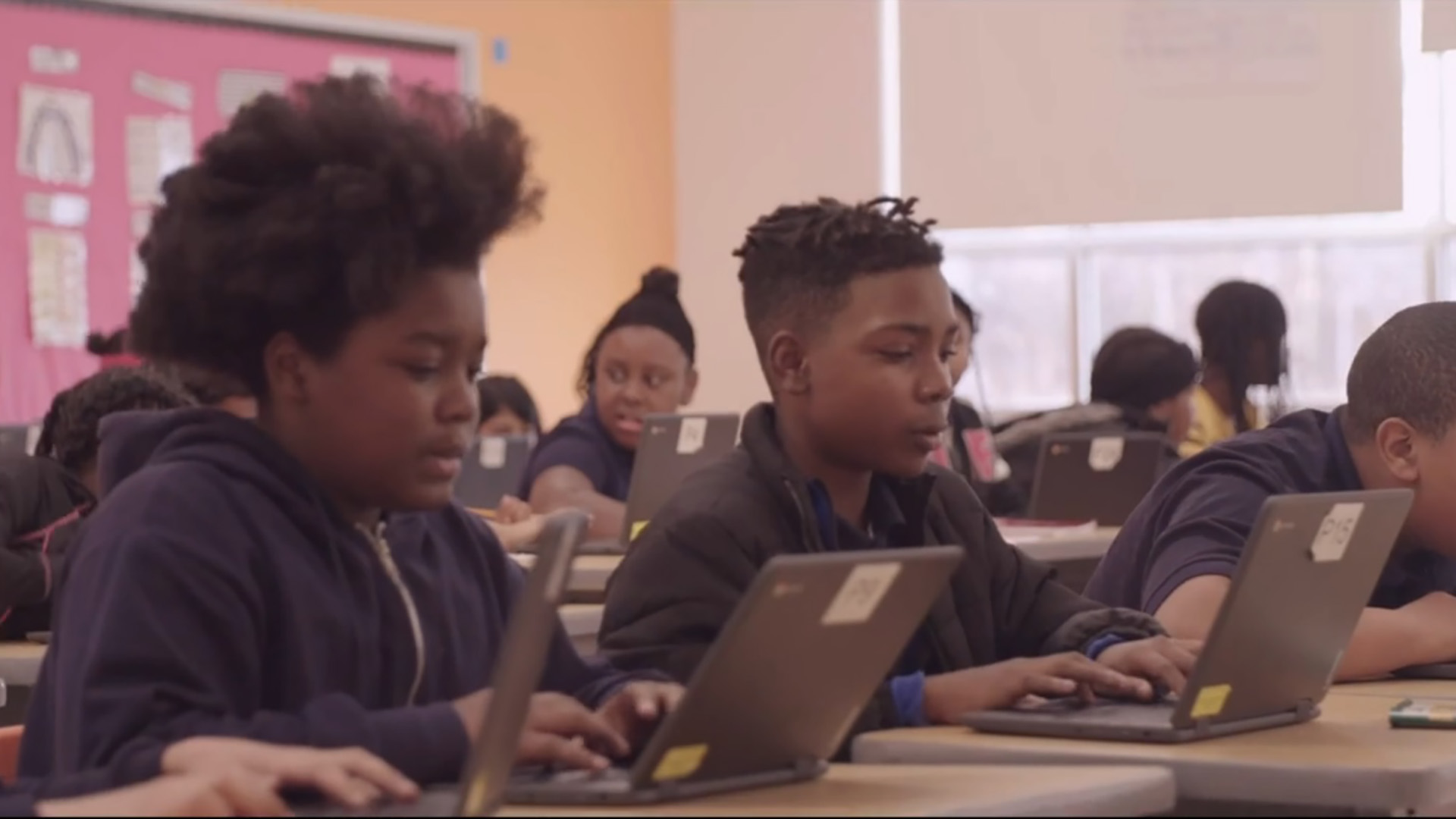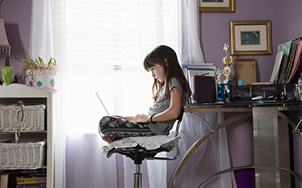VR unlocks an impossible reality for students
When you were a kid, what did you want to be when you grew up? An astronaut? A ballerina? A veterinarian? What if you weren’t allowed to choose at all?
For millions of children around the world, the possibilities of what they can grow up to be are circumscribed by where they live, grow, and learn. The World Economic Forum estimates that only a handful of countries provide opportunities for real social mobility.
In many communities around the world, the lottery of birth is like being born into a room with no door. The cultural and/or economic status of a person’s parents effectively determines what kind of work they’ll do and what they’ll earn. It’s not a problem of ability, but instead, one of opportunity. And there is nowhere to go if there is no door.
Unless maybe, technology and education can crack open a window into something better.
For an example of what that might look like, let’s take a trip to Baltimore.
Northeast of Johns Hopkins Hospital lies a neighborhood – one of Baltimore’s poorest – where the median annual income is just $26,000. A city analysis from 2017 found that kids in this neighborhood have life expectancies two decades shorter than children born in Baltimore’s most affluent enclaves. For these children, the path to a better life leads squarely through education.
So when the re-envisioned Fort Worthington Elementary and Middle School opened in East Baltimore in 2017, it was hailed as a victory by community activists and educators eager to show the city’s students that their futures were valued and important.
“They’re going to leave here equipped with the skills and the knowledge to thrive in any competitive field,” said school principal Monique Debi.
Now, through a partnership with Lenovo, educators at the school are using technology to further propel students’ learning and feed their creativity.
The Lenovo VR Mirage Solo Headset is proving to be a particularly powerful tool for students to experience new things. Some of these experiences are dazzling: imagine coming face-to-face with a jaguar in the jungle or watching a flock of flamingos takes flight over the Andes.
Others might seem ordinary to some – but it all depends on context.
FEATURED SOLUTIONS

Smarter Education Solutions

VR Classroom Solution

Client Virtualization
“Now you have kids going to the beach sitting in Baltimore. They couldn’t do that before. You have kids literally looking around like, ‘Wow we’re at the beach here!’” said Farron George, Technology Teacher. “You throw on the headsets and you have a completely different experience.”
“I feel like, when I’m using it it’s like I’m more in my zone,” said Fort Worthington student Brian Williams. “You get to see stuff that you don’t actually see in real life or get the chance to see in real life.”
Teachers say these tools – from the headsets to Lenovo Chromebooks to Lenovo Mirage Cameras with Daydream– are driving excitement by making learning more experiential and immediate. They can also personalize the pacing of education, which research suggests may help students learn more successfully, especially in math.

They’re going to leave school equipped with the skills and the knowledge to thrive in any competitive field.
— Monique Debi, Principal, Baltimore Public Schools
That means students like Brian can build skills they’ll need to thrive in a shifting world, from digital literacy to reading, math and science fundamentals. It’s an inspiring example of how technology can be a great equalizer, opening kids’ minds to possibilities and passions they might never discover in the day-to-day grind of the neighborhood, from the physics of a roller coaster to the ecology of a rainforest.

In many communities around the world, the lottery of birth is like being born into a room with no door.
“It’s not just devices for our kids. It’s their gateway to the future,” said George.
That future – one in which all students have the power to learn, invent, collaborate, and innovate – is one we all stand to benefit from.
For society to meet its full potential, it is imperative we harness the potential of kids.
Visionary, equity-advancing educational technology will be sorely needed in the years to come. The global population of students is projected to grow to 2.7 billion by 2035; technology’s role will grow in tandem, helping educators open the door to resources beyond students’ immediate surroundings.
“I think the challenge becomes, how do we as adults and educators engage in conversations with them about what the possibilities are?” said George. “Because I think if you can harness their energy and their creativity, they can create solutions to things that we would never think about.”















